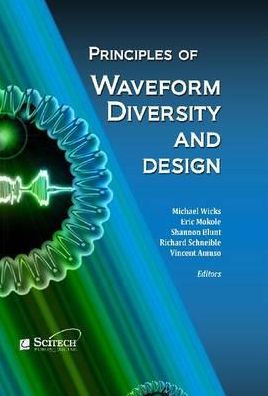Principles of Waveform Diversity and Design
This is the first book to discuss current and future applications of waveform diversity and design in subjects such as radar and sonar, communications systems, passive sensing, and many other technologies. Waveform diversity allows researchers and system designers to optimize electromagnetic and acoustic systems for sensing, communications, electronic warfare or combinations thereof. This book enables solutions to problems, explaining how each system performs its own particular function, as well as how it is affected by other systems and how those other systems may likewise be affected. It is an excellent standalone introduction to waveform diversity and design, which takes a high potential technology area and makes it visible to other researchers, as well as young engineers.
1101658196
Principles of Waveform Diversity and Design
This is the first book to discuss current and future applications of waveform diversity and design in subjects such as radar and sonar, communications systems, passive sensing, and many other technologies. Waveform diversity allows researchers and system designers to optimize electromagnetic and acoustic systems for sensing, communications, electronic warfare or combinations thereof. This book enables solutions to problems, explaining how each system performs its own particular function, as well as how it is affected by other systems and how those other systems may likewise be affected. It is an excellent standalone introduction to waveform diversity and design, which takes a high potential technology area and makes it visible to other researchers, as well as young engineers.
265.0
In Stock
5
1

Principles of Waveform Diversity and Design
1228
Principles of Waveform Diversity and Design
1228Hardcover
$265.00
265.0
In Stock

Product Details
| ISBN-13: | 9781891121951 |
|---|---|
| Publisher: | The Institution of Engineering and Technology |
| Publication date: | 06/30/2011 |
| Series: | Radar, Sonar and Navigation |
| Pages: | 1228 |
| Product dimensions: | 7.40(w) x 10.10(h) x 2.50(d) |
About the Author
From the B&N Reads Blog
